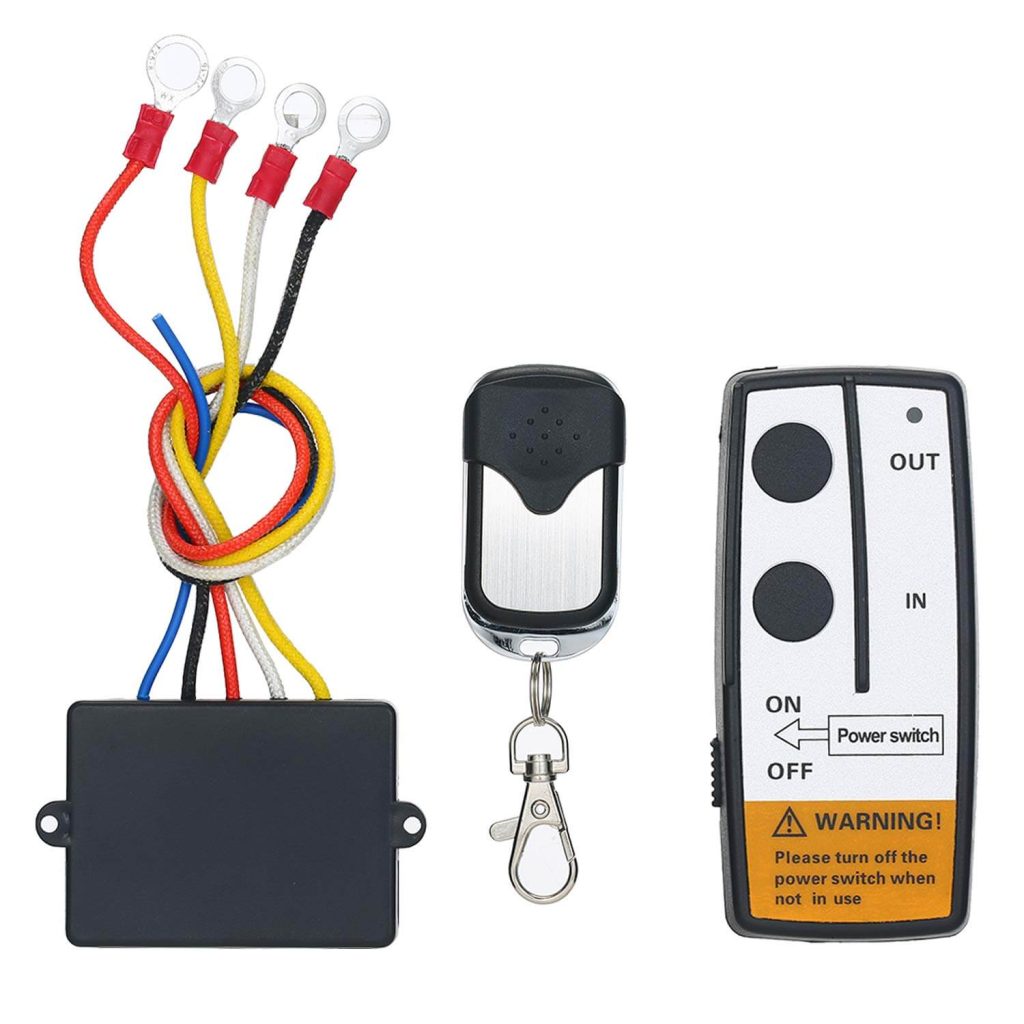Winch remote controls are indispensable tools for managing heavy lifting and pulling operations seamlessly and safely.
The convenience, safety, and efficiency they bring make them crucial in scenarios where manual operation could be hazardous or impractical.
What is a Winch Remote Control?

A winch remote control is essentially a device that operates a winch system wirelessly or through a wired connection, allowing the user to manage the winching process from a safe distance.
These controls come in two main types: wired and wireless.
Wired remote controls are connected to the winch via a cable, while wireless remote controls communicate with the winch using radio frequency (RF) or Bluetooth technology.
Wireless remote controls offer greater mobility and freedom of movement, making them the preferred choice for most winching applications.
How Does a Winch Remote Control Work?

At its core, a winch remote control works by transmitting signals from the handheld unit to the winch’s receiver.
These signals are converted into commands that control the winch’s functions, such as extending or retracting the cable, adjusting the speed, or engaging the brake.
In the case of wireless remote controls, the communication between the transmitter (the handheld unit) and the receiver (the winch) is facilitated by radio waves or Bluetooth technology.
The transmitter encodes the user’s input from the control buttons into a wireless signal, which is then received and decoded by the receiver on the winch.
This seamless communication allows for precise control over the winch’s operations from a safe distance.
The essential components of a winch remote control include:
- Transmitter: The transmitter is the handheld unit that you hold and operate. It contains control buttons or switches that allow you to input commands for the winch. When you press a button or switch on the transmitter, it generates an electrical signal that corresponds to the desired winch function (e.g., forward, reverse, stop, or speed adjustment).
Inside the transmitter, there is a small microcontroller or a dedicated circuit that encodes the electrical signal into a wireless signal. This encoding process typically involves modulating the signal onto a specific radio frequency (RF) or using a specific wireless communication protocol like Bluetooth.
- Wireless Communication: The encoded wireless signal from the transmitter is then transmitted through an antenna or transmitter module. In the case of RF-based remote controls, the signal is broadcast as radio waves at a specific frequency, typically in the unlicensed Industrial, Scientific, and Medical (ISM) radio bands.
For Bluetooth-based remote controls, the transmitter establishes a wireless connection with the receiver using the Bluetooth protocol, which allows for secure and reliable communication over a shorter range.
- Receiver: The receiver is a module mounted on or integrated with the winch. It contains an antenna or receiver module that can detect and receive the wireless signal transmitted by the transmitter.
Inside the receiver, there is a corresponding circuit or microcontroller that decodes the received wireless signal. This decoding process involves demodulating the signal and interpreting the encoded commands sent by the transmitter.
- Winch Control: Once the receiver has decoded the commands from the transmitter, it generates the appropriate electrical signals or control signals to operate the winch’s functions. These control signals are then sent to the winch’s motor control circuitry or relays, which in turn actuate the winch’s motor, clutch, brake, or other mechanical components.
For example, if you press the “forward” button on the transmitter, the transmitter encodes and sends a wireless signal corresponding to the “forward” command.
The receiver receives and decodes this signal, and then sends a control signal to the winch’s motor control circuitry, causing the winch motor to rotate in the forward direction and extend the cable.
- Power Source: Both the transmitter and receiver require a power source to operate. Typically, the transmitter is powered by disposable or rechargeable batteries, while the receiver may be powered by the winch’s battery or an external power source.
The transmitter’s battery powers the microcontroller, encoding circuitry, and wireless transmission module.
The receiver’s power source is used to power the receiving circuitry, decoding components, and any control signals or relays that interface with the winch’s mechanical components.
Key Features of Winch Remote Controls
Several features are particularly important when considering winch remote controls:
- Range and Signal Strength: A good remote control must have a sufficient operational range and robust signal strength to ensure it can be operated from a distance without interference. This is crucial in large open areas or when the operator must maintain a distance due to safety concerns.
- Durability and Weather Resistance: Since many winch operations occur outdoors and in challenging conditions, the remote control should be durable and capable of withstanding environmental stressors such as dust, water, and extreme temperatures.
- Battery Life and Power Management: Effective power management ensures that the remote control can operate for extended periods without needing frequent recharges or battery replacements. This reliability is vital during prolonged or critical operations.
- Safety Features: Advanced safety features like emergency stop buttons and lockout functions prevent accidental operation, which could lead to dangerous situations. These features are essential for ensuring the safety of all personnel involved in the operation.
- Ergonomic Design and Ease of Use: An ergonomically designed remote control improves user comfort and reduces fatigue, which is especially important during long or difficult operations. Ease of use also enhances the efficiency of operations, allowing for quicker response times and better handling.
Conclusion
Using a winch remote control effectively enhances the safety, efficiency, and convenience of operations involving winches. By selecting a high-quality remote control suited to your specific needs and maintaining it properly, you can significantly improve the operational capabilities of your winch system. For those looking to delve deeper into winch technology or needing tailored advice, consulting with industry professionals or exploring additional resources can be extremely beneficial.

